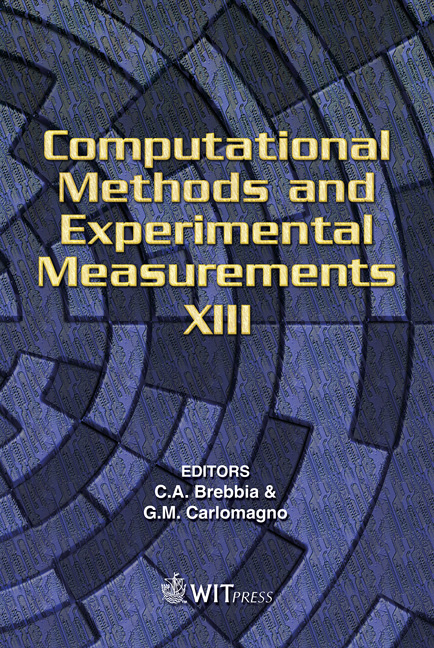Comparison Of H-, P- And Hp-adaptation For Convective Heat Transfer
Price
Free (open access)
Transaction
Volume
46
Pages
10
Published
2007
Size
533 kb
Paper DOI
10.2495/CMEM070501
Copyright
WIT Press
Author(s)
D. W. Pepper & X. Wang
Abstract
Three adaptive FEM algorithms based on mesh refinement (h-adaptation), mesh enrichment (p-adaptation) and the combination of both (hp-adaptation) are employed to solve incompressible fluid flow problems including convective heat transfer effects. Test cases of natural convection in a square cavity with different Rayleigh numbers are solved using primitive variables in a modified finite element approach employing the three adaptive strategies. Results show excellent agreement among benchmark data available in the literature. Keywords: h-, p-, hp- adaptation, FEM, natural convection. 1 Introduction The finite element method (FEM) is a popular numerical tool used in many heat transfer and fluid flow simulations. The FEM is capable of easily dealing with irregular geometries and has the ability to implement enhanced accuracy using general-purpose algorithms. Adaptive FEM is especially attractive since it can dynamically control mesh characteristics to obtain desired accuracy. Following early work using h-adaptive FEM to accurately capture shock waves in compressible flow [1], the adaptive FEM has become an active research area over the past decade. Generally, there are four categories of adaptation: (1) h-adaptation, where the element sizes vary while the order of the shape functions are constant; (2) padaptation, where the order of the shape functions vary while the element sizes are constant; (3) r-adaptation, where the nodes are redistributed in an existing mesh in the process of adaptation while the total element and node number are
Keywords
h-, p-, hp- adaptation, FEM, natural convection.





